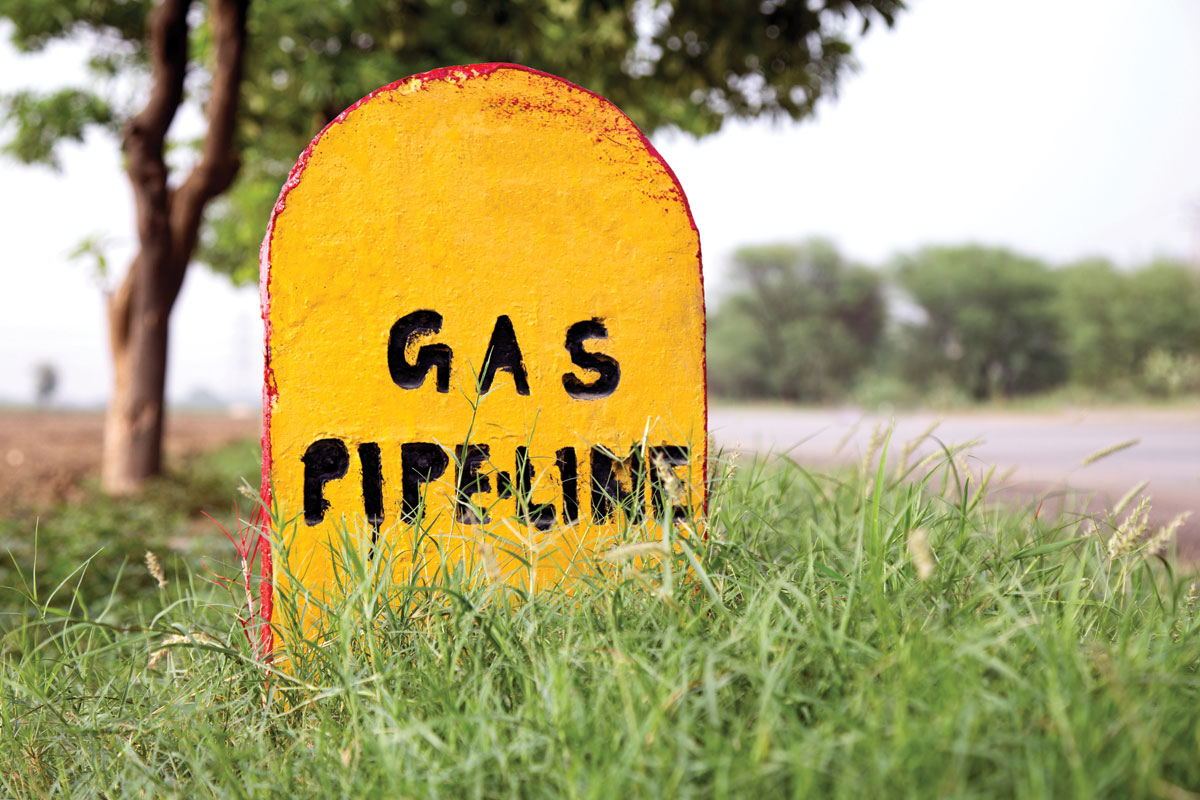ENERGY PIPELINE
The Indian government has been pursuing with some zeal proposed pipelines projects from Turkmenistan, Kazakhstan, Russia and Iran. Energy pipeline diplomacy has been a focus area during Prime Minister Narendra Modi’s (@narendramodi) recent visits to Central Asia and Russia. Soumen Bagchi, joint secretary, energy security, at India’s Ministry of External Affairs, recently said the country’s energy pipeline diplomacy was back with “positive developments,” writes Siddharth Srivastava.
Infrastructure development is a focus area of the Modi government. The usual sectors that are spoken about are roads, power, Railways and freight corridors. Over the recent months New Delhi has also engaged in intensive discussions to implement several cross-country oil and gas pipeline projects that could form the bedrock of India’s future energy security.
While the pipeline from Turkmenistan called the TAPI project could head towards implementation from this year end itself, India has had several rounds of talks with Kazakhstan, Iran and Russia.
TAPI could form the template for more projects, on-land and under-sea to connect South Asian consumers to suppliers from Central Asia and the Middle East. Crucially India and Pakistan despite escalated border tensions over the recent past, have unequivocally backed the pipeline projects. Apart from crucial fuel supplies, Pakistan stands to earn substantial transit fees as the proposed pipeline projects will traverse on-land over its territory.
A big step forward has been the recent decision to appoint state-owned TurkmenGaz to lead a consortium that will lay the 1800-km TAPI gas pipeline. Recently, state media reported that Turkmenistan has begun work on the pipeline. “Specialists of the Institute of Oil and Gas in the ‘Turkmengaz’ state corporation have started engineering and surveying work on the route for the future TAPI gas pipeline,” state newspaper Neutral Turkmenistan said, adding construction would begin in December.
The TAPI pipeline will have a capacity to carry 90 units of gas per day. India and Pakistan will received an equal share of 38 units per day each, while rest will go to Afghanistan. TAPI will transport gas from Turkmenistan’s Galkynysh field.
A joint working group, meanwhile, has been formed to examine the possibility of a pipeline from Kazakhstan. India plans to conduct a feasibility study to import crude oil and gas from Kazakhstan through a pipeline or as LNG in ships. The idea of a pipeline from Russia has gained currency over the past year and has been a subject of discussions during multiple meetings between Prime Minister Modi and Russian President Vladimir Putin.
![]()
An impetus to the project has been Russian major Rosneft and India’s Essar Oil signing 100 million tons crude oil supply pact to feed the Vadinar refinery in Gujarat. Two export routes from Russia have been considered: via China’s western province Xinjiang to India’s northern Himalayan State Jammu & Kashmir. There are multiple challenges in this proposal. The terrain is challenging, while both Xinjiang and J&K are restive areas with security a problem. The other more feasible route is via Central Asia and then parallel to the TAPI pipeline. Given the progress in the TAPI project this route is likely to receive more attention in future.
India has been seeking to engage with Iran, keen to tap its hydrocarbon sector in the emerging post-sanctions scenario.
Ignoring U.S. objections, New Delhi recently signed an agreement with Iran to develop the strategically important Chabahar port on the Gulf of Oman, near Iran’s border, which will give India sea-land access route to the Middle East, Central Asia and Afghanistan bypassing Pakistan. The port can be used to ship crude oil and urea, saving India transportation costs. India could also use the Chabahar Port to ship Iranian gas in liquid form or LNG.
The proposed Iran-Pakistan-India (IPI) pipeline will traverse via Chabahar to Pakistan’s southern port Gwadar, to Balochistan, Sindh province and further onto India. New Delhi and Tehran agreed to develop the Chabahar port in 2003, but India kept away from the venture, as also others such as the IPI project and developing the Farzad-B gas field, for fear of Western sanctions.
The prospects of IPI pipeline have brightened over the recent past. Last week, Pakistan’s minister for Petroleum and natural resources Shahid Khaqan Abbasi said construction of main portion of the Iran-Pakistan (IP) gas pipeline will begin within six months and completed by December 2017. “We are going ahead with the pipeline from Gwadar to Nawab Shah (in Sindh). As soon as the sanctions are lifted construction of Iran-Gwadar portion of the pipeline will start. The design is ready and we just need to order the equipment,” said Abbasi. Iran has already constructed major part of the $7.5 billion IP project on its territory. The IPI pipeline will connect Iran’s rich South Pars gas field to Pakistan and India. With Pakistan and India seeing eye to eye on need to push oil and gas pipeline projects, the prospects seem bright.


